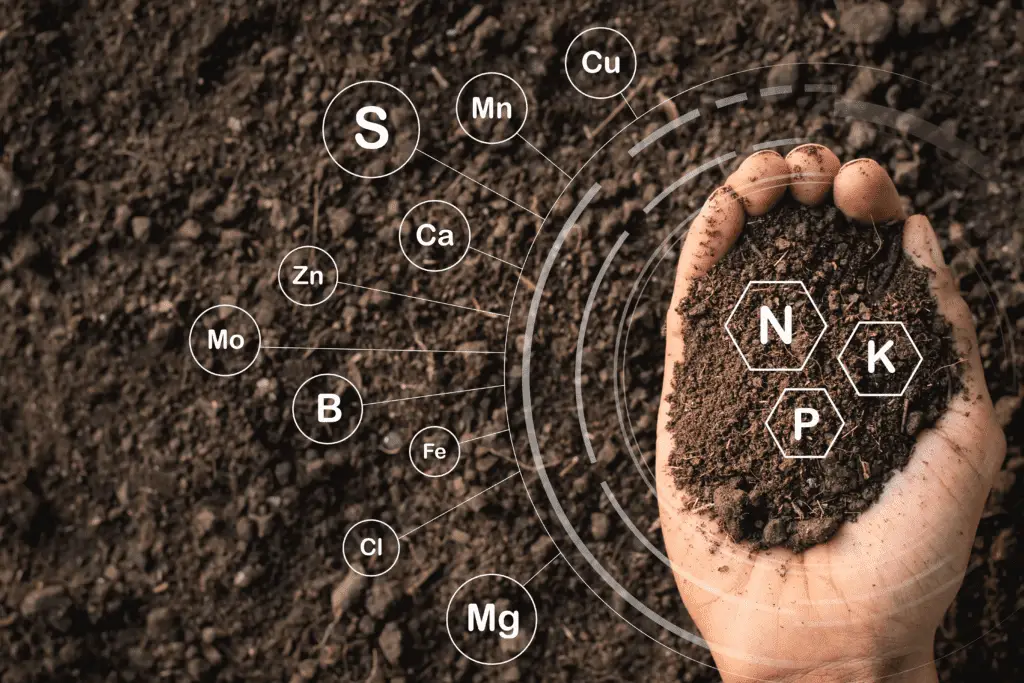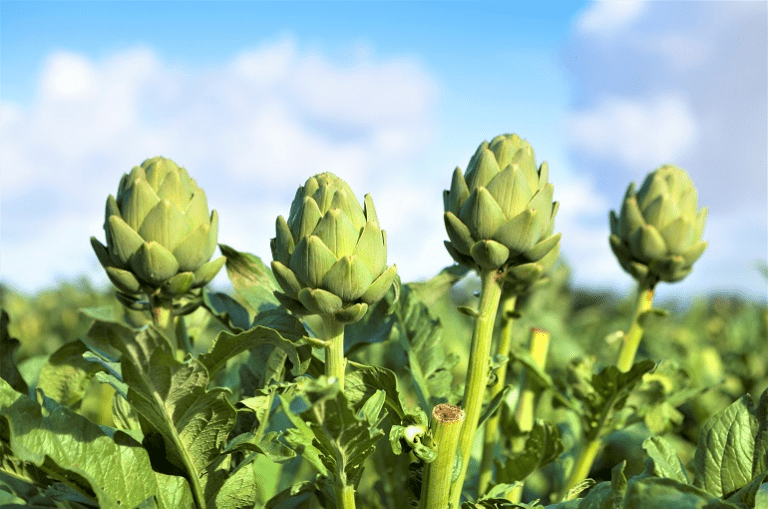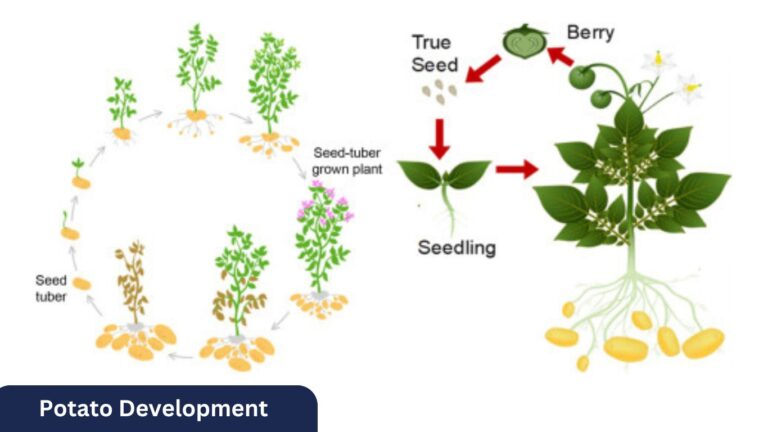Diagnosing Nutrient Deficiencies: How to Detect and Fix the Nutrient Issues in Your Plants
Table of Contents
Plant Nutrition: Understanding the Importance of Nutrients for Healthy Growth
Plants, just like any living organism, require a balanced intake of nutrients to thrive and achieve healthy growth. Nutrients play a crucial role in providing the necessary building blocks for various physiological processes that occur within plants. These essential elements are classified into two broad categories: macronutrients and micronutrients.
Macronutrients, as the name suggests, are required in larger quantities by plants. They include nitrogen, phosphorus, potassium, calcium, magnesium, and sulfur. These nutrients are directly involved in fundamental functions such as photosynthesis, energy production, root development, and overall plant structure. Without an adequate supply of macronutrients, plants may exhibit stunted growth, yellowing of leaves, and a weakened immune system, making them more susceptible to diseases and pests.
On the other hand, micronutrients are needed in smaller amounts, but their importance should not be overlooked. These include elements such as iron, zinc, manganese, copper, boron, molybdenum, and chlorine, among others. Although required in trace quantities, micronutrients play crucial roles in enzyme activation, cell division, and overall nutrient absorption and transportation within the plant. Deficiencies of these nutrients can lead to specific symptoms like leaf discoloration, leaf curling, and decreased fruit or flower production.

Understanding the importance of nutrients in plant nutrition is vital for any gardener or plant enthusiast. By providing plants with the right balance and quantity of macronutrients and micronutrients, we can ensure their optimal health and growth. In the following sections of this article, we will delve deeper into the specific symptoms of nutrient deficiencies, their respective solutions, and how to address them for the well-being of your plants.
Identifying Common Symptoms of Nutrient Deficiencies in Plants
Nutrient deficiencies in plants can have a significant impact on their overall health and growth. Being able to identify and understand the common symptoms of these deficiencies is crucial for gardeners and plant enthusiasts. One common symptom of nutrient deficiency is yellowing or discoloration of leaves. For example, a lack of nitrogen can cause the leaves to turn pale or yellowish, while a phosphorus deficiency may result in a purple or reddish tint.
Another indicator of nutrient deficiency is stunted growth or poor plant development. Plants lacking essential nutrients may exhibit slow growth, smaller leaves, and overall weak structure. In some cases, the root system may also be affected, leading to sparse or damaged roots. It is important to note that symptoms can vary depending on the specific nutrient that is lacking, so it is essential to accurately diagnose the deficiency for appropriate treatment. Understanding and recognizing these common symptoms can help gardeners take proactive steps to address nutrient deficiencies in their plants, ensuring optimal growth and health.
The Role of Macronutrients in Plant Health
Macronutrients play a vital role in ensuring the overall health and well-being of plants. These essential nutrients are needed in relatively large amounts and are responsible for various physiological processes that contribute to healthy growth. The three primary macronutrients are nitrogen (N), phosphorus (P), and potassium (K), which are commonly referred to as NPK.
Nitrogen is crucial for plant development as it is a key component of proteins, enzymes, and chlorophyll. It plays an essential role in photosynthesis, the process by which plants convert sunlight into energy. Nitrogen also aids in the production of vibrant green foliage and stimulates growth in stems and leaves.
Phosphorus is critical for energy transfer within plant cells and is a primary component of nucleic acids, which are vital for DNA and RNA synthesis. It is responsible for promoting root development, enhancing flower and fruit production, and aiding in the transfer of nutrients throughout the plant.

Potassium, often referred to as the “quality nutrient,” plays a crucial role in regulating the water balance of plants and improving their overall tolerance to stresses such as drought, heat, and disease. It also contributes to the activation of enzymes and is involved in the synthesis and transport of carbohydrates and proteins.
Together, these macronutrients ensure the proper functioning of plants, supporting their growth, development, and overall health. However, it is important to maintain a balanced ratio of these nutrients to avoid deficiencies or excesses that can negatively impact plant health.
Understanding the Functions of Micronutrients in Plants
Micronutrients play a crucial role in the healthy growth and development of plants. While they are required in smaller quantities compared to macronutrients, their functions are just as important. One important function of micronutrients is their involvement in various enzymatic reactions within plants. For example, iron is a key component of many enzymes involved in photosynthesis, respiration, and nitrogen metabolism. Zinc, on the other hand, is essential for the synthesis of growth hormones and the regulation of protein synthesis. By understanding the specific functions of micronutrients, gardeners can ensure that their plants have access to these essential elements for optimal growth and productivity.
In addition to their role in enzymatic reactions, micronutrients also play a critical role in plant defense mechanisms. For instance, manganese is essential for the activation of enzymes that protect plants from oxidative stress caused by environmental factors such as drought, high temperatures, and pathogen attacks. Copper, another micronutrient, is involved in the production of lignin, a compound that strengthens plant cell walls and enhances disease resistance. By providing plants with adequate levels of micronutrients, gardeners can help boost their plants’ natural defense mechanisms and promote overall plant health.
| Micronutrient | Function in Plants |
|---|---|
| Iron (Fe) | Essential for chlorophyll synthesis, electron transport, and photosynthesis. |
| Zinc (Zn) | Involved in enzyme activation, DNA synthesis, and root development. |
| Manganese (Mn) | Plays a role in photosynthesis, nitrogen metabolism, and enzyme activation. |
| Copper (Cu) | Required for electron transport in photosynthesis and enzyme activation. |
| Molybdenum (Mo) | Essential for nitrogen metabolism and the conversion of nitrate to ammonia. |
| Boron (B) | Aids in cell wall formation, pollen tube growth, and carbohydrate transport. |
| Chlorine (Cl) | Involved in photosynthesis, osmotic regulation, and water movement. |
| Nickel (Ni) | Essential for certain enzyme activities, especially in nitrogen metabolism. |
In the next section, we will delve deeper into the specific signs and symptoms of nutrient deficiencies in plants, focusing on nitrogen deficiencies and their solutions. Understanding these deficiencies will allow gardeners to take appropriate action to address them and ensure the continued health and vitality of their plants.
• Micronutrients are required in smaller quantities compared to macronutrients, but their functions are equally important
• Micronutrients play a crucial role in enzymatic reactions within plants
– Iron is essential for enzymes involved in photosynthesis, respiration, and nitrogen metabolism
– Zinc is necessary for growth hormone synthesis and protein regulation
• Micronutrients contribute to plant defense mechanisms
– Manganese activates enzymes that protect plants from oxidative stress caused by environmental factors like drought and pathogens attacks
– Copper aids in the production of lignin, strengthening plant cell walls and enhancing disease resistance
• Providing adequate levels of micronutrients promotes overall plant health
• Next section will focus on signs and symptoms of nutrient deficiencies in plants with a specific emphasis on nitrogen deficiencies
Detecting Nitrogen Deficiencies: Signs and Solutions
Nitrogen is one of the most essential macronutrients required for healthy plant growth. However, detecting nitrogen deficiencies in plants is crucial in order to prevent stunted growth and ensure optimal development. One of the key signs to look out for is a general yellowing or discoloration of older leaves, starting from the tips and spreading towards the leaf bases. This symptom, known as chlorosis, occurs due to the lack of sufficient chlorophyll production, which is responsible for the green color of leaves. Additionally, plants suffering from nitrogen deficiencies tend to have reduced overall growth, with smaller leaves and a lack of vigor.
To address nitrogen deficiencies in plants, there are several solutions that can be implemented. Firstly, incorporating nitrogen-rich fertilizers, such as those with a higher nitrogen content, can provide the necessary nutrients to support plant growth. These fertilizers may come in the form of organic matter, such as compost or manure, or in synthetic forms like ammonium nitrate or urea. Regularly monitoring the nitrogen levels in the soil is also crucial, as it allows for timely application of fertilizers when deficiencies are detected. Additionally, proper irrigation management is important, as excessive water can lead to nitrogen leaching from the soil. By maintaining a balanced nitrogen supply and addressing deficiencies promptly, gardeners and plant enthusiasts can ensure the healthy and vibrant growth of their plants.
Recognizing Phosphorus Deficiencies: Symptoms and Remedies
Phosphorus is an essential nutrient for plant growth, playing a crucial role in various physiological processes. However, plants can sometimes suffer from phosphorus deficiencies, which can impact their overall health and productivity. One of the most common symptoms of phosphorus deficiency is poor root development, characterized by stunted growth and a reduced ability to absorb water and nutrients. Additionally, plants lacking phosphorus may display dark, purplish leaves, as well as slower flowering and fruiting.
To remedy phosphorus deficiencies, it is important to provide plants with an adequate supply of this nutrient. This can be achieved through the application of phosphorus-rich fertilizers or organic matter, such as bone meal or compost. It is crucial to distribute the fertilizer evenly around the plant’s root zone, ensuring proper uptake. Adjusting soil pH levels to the optimal range of 6 to 7 can also aid in phosphorus availability for plants. Furthermore, practicing crop rotation and incorporating phosphorus-fixing cover crops into the planting cycle can help replenish phosphorus levels in the soil naturally. By recognizing the symptoms of phosphorus deficiencies and implementing appropriate remedies, gardeners can ensure healthier and more productive plants.
Uncovering Potassium Deficiencies: Indications and Corrective Measures
Potassium is an essential nutrient for plant growth and development. It plays a crucial role in various plant functions, such as regulating water movement, activating enzymes, and maintaining overall plant health. However, potassium deficiencies can occur, hampering the plant’s ability to thrive.
Indications of potassium deficiencies in plants are often visible in the foliage. One common symptom is chlorosis, where the leaves turn yellow or have yellow spots between the veins. Additionally, plants lacking potassium may exhibit stunted growth, weak stems, and increased susceptibility to pests and diseases. To accurately diagnose a potassium deficiency, conducting a soil test is recommended, as it can reveal the nutrient levels and guide corrective measures.
To address potassium deficiencies in plants, several corrective measures can be taken. One effective approach is through fertilization. Applying potassium-rich fertilizers, such as potassium sulfate or potassium nitrate, can help replenish the nutrient levels in the soil. Additionally, amending the soil with potassium-rich organic matter, like compost or manure, can provide a long-term source of potassium. It’s important to note, however, that excessive potassium application should be avoided, as it can lead to imbalances with other nutrients. Hence, it is crucial to follow dosage recommendations based on soil test results and consult with a professional if needed.
Addressing Calcium Deficiencies in Plants: Symptoms and Treatments
A calcium deficiency in plants can have detrimental effects on their growth and overall health. It is important to understand the symptoms of this deficiency in order to address it effectively. One of the most common symptoms of calcium deficiency is stunted or distorted growth in both the roots and the shoots of the plant. Leaves may appear wilted or may develop yellow or brown spots, and the overall vigor of the plant may be compromised.

Treating calcium deficiencies in plants involves providing the plant with a sufficient supply of this essential nutrient. One method of treatment is through the application of calcium-rich fertilizers or soil amendments. These can be applied directly to the soil or through foliar spraying, depending on the severity of the deficiency. Additionally, maintaining an appropriate pH level in the soil is crucial for calcium uptake, as acidic or alkaline conditions can hinder the plant’s ability to absorb calcium. Regular soil testing and adjustment of pH levels, along with proper irrigation practices, can greatly aid in the prevention and management of calcium deficiencies in plants.
Managing Magnesium Deficiencies: Signs and Strategies
One of the key nutrients essential for the healthy growth and development of plants is magnesium. Magnesium plays a vital role in various physiological processes within plants and is necessary for the proper functioning of enzymes involved in energy production, photosynthesis, and nutrient absorption. However, magnesium deficiencies can occur in plants, leading to detrimental effects on their overall health and productivity.
One of the most common signs of magnesium deficiency in plants is chlorosis, a condition where the leaves start to turn yellow, starting from the bottom of the plant and progressing towards the top. This yellowing is due to the inadequate production of chlorophyll, the pigment responsible for photosynthesis. Additionally, plants suffering from magnesium deficiency may experience stunted growth, reduced fruit and seed production, and increased susceptibility to diseases and pests. To address magnesium deficiencies, it is crucial to provide plants with an adequate supply of this essential nutrient. Different strategies can be implemented, including incorporating magnesium-rich fertilizers into the soil, foliar spraying with magnesium solutions, or even adjusting the pH of the soil to enhance magnesium availability for plants. By promptly identifying and addressing magnesium deficiencies, gardeners can ensure optimal plant growth and overall health.
Tackling Iron Deficiencies in Plants: Identification and Interventions
Iron is an essential micronutrient that plays a crucial role in the growth and development of plants. When plants lack sufficient iron, they can suffer from iron deficiencies, which can have detrimental effects on their overall health and productivity. Identifying these deficiencies is key in ensuring timely interventions to address the issue.
One common symptom of iron deficiency in plants is chlorosis, characterized by yellowing of leaves, particularly the younger ones. This yellowing occurs due to the inability of plants to produce sufficient chlorophyll, which is responsible for their green color. In severe cases, the leaves may even turn white. Additionally, plants with iron deficiencies often exhibit stunted growth and reduced vigor.
To tackle iron deficiencies in plants, it is crucial to provide them with adequate amounts of this micronutrient. This can be achieved through various interventions. One approach is to amend the soil with iron fertilizers or organic matter that is rich in iron. It is important to note that the availability of iron to plants is influenced by several factors, such as soil pH and the presence of other minerals. Therefore, it is essential to assess the soil conditions and consult with experts to determine the most suitable iron supplementation method for your specific plants. By addressing iron deficiencies promptly, you can ensure the healthy growth and development of your plants, leading to improved yields and overall success in your gardening endeavors.
Overcoming Zinc Deficiencies: Signs and Steps to Remedy
Zinc is an essential micronutrient for the healthy growth and development of plants. Its deficiency can lead to a range of symptoms that can affect plant vigor and productivity. Recognizing these signs early on and taking appropriate steps to remedy the deficiency is crucial for maintaining optimal plant health.
One of the most common signs of zinc deficiency in plants is chlorosis, where the leaves lose their green color and appear yellow or white. This occurs because zinc is involved in the production and utilization of chlorophyll, the pigment responsible for photosynthesis. Other symptoms may include stunted growth, distorted leaves, and poor fruit or seed development.
To overcome zinc deficiencies, there are several steps that can be taken. The first is to ensure that the soil pH is within the optimal range for zinc availability, which is typically between 6 and 7. If the soil is too alkaline or acidic, zinc may become less accessible to the plants. Additionally, incorporating organic matter into the soil can improve its nutrient-holding capacity and increase zinc availability. Applying zinc fertilizers, either as foliar sprays or through soil application, is another effective approach. It is important to follow recommended dosage rates and application methods to avoid nutrient imbalances or toxicity. Regular monitoring of zinc levels through soil testing can help determine the effectiveness of these remedial strategies. By addressing zinc deficiencies promptly, gardeners can ensure the robust growth and overall health of their plants.
Combatting Manganese Deficiencies: Symptoms and Actions to Take
Manganese is an essential micronutrient that plays a vital role in the healthy growth and development of plants. However, a deficiency in manganese can cause noticeable symptoms that can hinder the overall health and productivity of your plants.
One of the common signs of manganese deficiency is interveinal chlorosis – a yellowing of the leaves that occurs between the veins. This can be easily mistaken for a nitrogen or iron deficiency, so it is important to carefully observe the symptoms and rule out other nutrient deficiencies. Other symptoms include stunted growth, with small and distorted leaves, as well as reduced flowering and fruiting.
To combat manganese deficiencies, it is crucial to ensure an adequate supply of this micronutrient in your plants’ diet. One effective method is to incorporate manganese-rich fertilizers into your gardening routine. You can also consider applying foliar sprays containing manganese, which can be absorbed through the leaves and provide a quick boost. However, it’s important to note that excessive manganese can be toxic to plants, so it’s crucial to follow recommended dosage guidelines. Regular soil testing is also recommended to monitor manganese levels and make necessary adjustments to maintain a balanced nutrient profile for your plants.
Dealing with Copper Deficiencies: Indicators and Approaches for Correction
Copper is an essential micronutrient for plants, playing a crucial role in various physiological processes. However, copper deficiencies can occur in certain circumstances, hindering plant growth and development. To effectively deal with copper deficiencies, it is vital to recognize the indicators and employ appropriate correction approaches.
One of the most prominent indicators of copper deficiency in plants is chlorosis, characterized by the yellowing of leaves. As copper is involved in the synthesis of chlorophyll, its scarcity can disrupt this process, leading to decreased pigment production and subsequent discoloration. Additionally, stunted growth, distortion in leaf shape, and poor root development may also manifest in copper-deficient plants. Recognizing these symptoms can help gardeners diagnose and address the issue promptly.
To correct copper deficiencies in plants, several approaches can be employed. One effective strategy is the application of copper-based fertilizers or amendments. By supplying the deficient plants with additional copper, the nutrient levels can be replenished, promoting healthy growth and development. However, it is crucial to follow recommended application rates to avoid potential toxicity, as excessive copper concentrations can be harmful to plants. Additionally, maintaining optimal soil pH levels and adequate organic matter content can enhance copper availability for plant uptake, thereby preventing deficiencies from occurring in the first place.
What are the indicators of copper deficiencies in plants?
The indicators of copper deficiencies in plants include stunted growth, yellowing or bronzing of leaves, wilting, and failure to produce normal fruits or seeds.
What are the approaches for correcting copper deficiencies in plants?
The approaches for correcting copper deficiencies in plants include applying copper fertilizers or foliar sprays, ensuring proper soil pH and organic matter content, and practicing crop rotation to avoid continuous copper depletion.
Can copper deficiencies affect plant health?
Yes, copper deficiencies can significantly affect plant health. Copper plays a crucial role in various plant processes, such as photosynthesis, enzyme activation, and the formation of important compounds. Without sufficient copper, plants may experience reduced growth, decreased disease resistance, and overall poor health.
How can I determine if my plants have a copper deficiency?
You can determine if your plants have a copper deficiency by observing the symptoms mentioned earlier. Additionally, conducting a soil test can help determine copper levels in the soil and whether they are sufficient for plant growth.
Are there any natural sources of copper that can be used to correct deficiencies?
Yes, there are natural sources of copper that can be used to correct deficiencies. Organic matter, such as compost or manure, can provide some copper to the soil. Additionally, certain copper-containing minerals, such as copper sulfate, can be used as copper fertilizers.
Can excessive copper levels be harmful to plants?
Yes, excessive copper levels can be harmful to plants. Copper toxicity can cause leaf burn, reduce root growth, impair nutrient uptake, and inhibit the growth of beneficial soil microorganisms. It is important to maintain appropriate copper levels to avoid toxicity.
Are there any other factors that can contribute to copper deficiencies in plants?
Yes, there are other factors that can contribute to copper deficiencies in plants. These include high soil pH, excessive phosphorus or zinc levels, and imbalanced soil nutrient ratios. It is essential to consider these factors when addressing copper deficiencies.

Pallavi Gupta is a burgeoning writer at SouthElMonteHydroponics, blending her passion for data analysis with a keen interest in biotechnology. Currently pursuing a Bachelor’s in Biotechnology at Amity University, Pallavi delves into the intricacies of life sciences while gaining hands-on experience in the exciting world of data analysis. Her unique background provides a fresh perspective on hydroponic farming, as she explores the intersection of biotechnology and sustainable agriculture. Through her writing, Pallavi aims to bridge the gap between data-driven insights and innovative farming practices, inspiring others to harness technology for a greener future.







